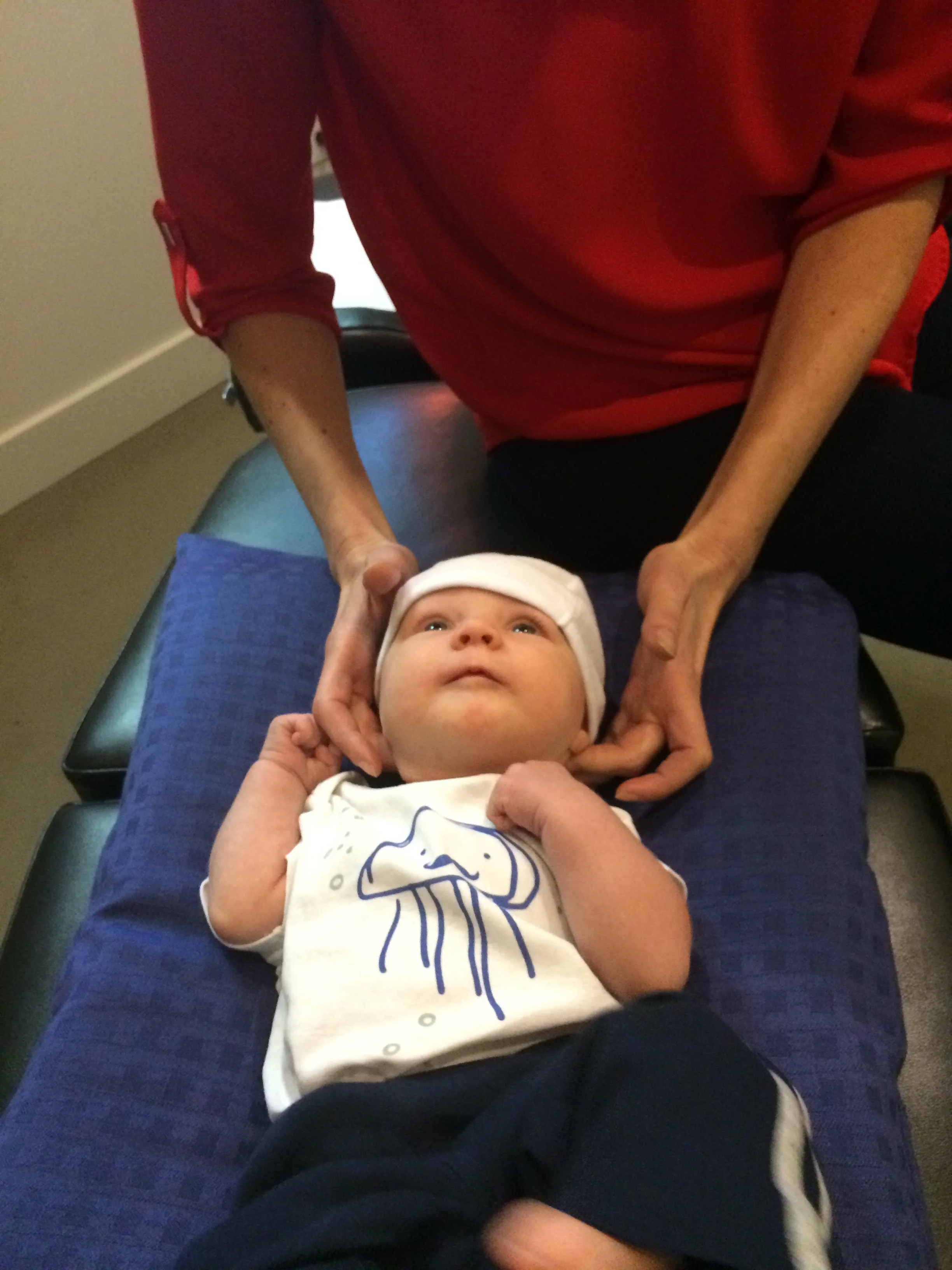Link between successful breastfeeding & the cranium
New moms are well aware of the benefits of breastfeeding. It is by far the best choice for infant feeding for numerous reasons and it’s not hard to recognize all the potentially positive things that come with breastfeeding, if it’s a successful endeavour. However, for many women, including myself, breastfeeding simply isn’t “easy”. A survey published in the journal Pediatrics showed that 2/3rd’s of mothers nursing new-borns struggle with breastfeeding.
Speaking from experience, there is nothing more frustrating than the helpless feeling of not being able to feed your baby. My situation was unique in that my son was born a premie. He came bursting into this world over 5 weeks early and we spent our first 2 weeks together in the NICU. It was STRESSFUL!! I was determined to breastfeed and so this is the formula that worked for me: pumping, chiro check-ups, multiple visits with lactation consultants, did I say pumping? and definitely a lot of tears were shed in the process. Having gone through some struggles myself, I can easily see why some women throw in the towel.
There are a number of reasons breastfeeding can be challenging: many babies have difficulty latching, they might prefer feeding only on one side, or in one position, some moms report a painful latch and/or fussiness of their newborn. The Centers for Disease Control reports that 77% of infants are breastfeeding right after birth, but by 6 months of age only 49% continue.
People often describe breastfeeding as one of the most natural things. Conversely, few things can be as challenging and depressing as struggling to breastfeed a baby that won’t latch properly. Breastfeeding in it self is no small task. It’s a baby’s first time multitasking: they have to accomplish sucking, swallowing and breathing at the same time. To perform this event it requires coordination between the muscles, cranial bones and nerves. Take a look at all the structures involved:
6 out of the 12 cranial nerves
22 cranial bones
60 muscles
The cranial bones form the outer shell and are there to support and protect the musculoskeletal system and the nervous system. If the musculoskeletal or nervous system is not functioning properly, an infants ability to be successful at breastfeeding is diminished. All of the systems: the cranium, the musculoskeletal system and the nervous system must be functioning optimally for babies to be successful at breastfeeding.
There are many things that can be done to increase a mother’s success with breastfeeding, did you know chiropractic care is a really effective solution? Take a look at this research study that was published in The Journal of Evidence-Based Complementary & Alternative Medicine: A total of 72 mothers participated in the study from February to October. When they began the study all 72 women reported suboptimal breastfeeding. During the study the participants utilized the services of both chiropractic and midwifery care. Prior to treatment 26% of the moms were exclusively breastfeed. At the end of the study 93% of mothers reported an improvement in feeding as well as satisfaction with the care provided and 86% of moms reported they were exclusively breastfeeding!
What does an adjustment on a newborn baby look like? Any assessment in the office always begins by doing a thorough history. Particularly with kids it’s important to discuss the details of the birth process-many misalignments can be linked to a baby’s entrance into this world……think about the stress on a baby if it’s a long labour, super quick labour or if any interventions are used- forceps, vacuum or a C-section. Then I begin assessing the baby’s cranium and spine, to see if there are any areas of tension or restriction. There is often a lot of fear when it comes to introducing anything new to your newborn. And I totally get it. They are your baby. But there is no need to worry, it’s very gentle and completely different from an adult adjustment. A pediatric adjustment is so gentle that many babies sleep through their first visit. The best part is most parents report a positive improvement in just a few visits.
Gentle pediatric adjustment
If you know of anyone struggling with breastfeeding, spread the word. Chiropractic care is one of the most effective natural solutions to this common problem. Chiropractic care is simply about bringing healthy movement to the spine and movement is life.
Your family’s chiropractor,
Dr. Lindsay
References:
Chiropractic and the Breastfeeding Baby: New case report explores cranial dysfunction link. July 11, 2019. Australian Spinal Research Foundation.
Journal of Evidence-Based Complementary & Alternative Medicine: Parent Reports of Exclusive Breastfeeding After Attending a Combined Midwifery and Chiropractic Feeding Clinic in the United Kingdom, March 2016, 21(2).

